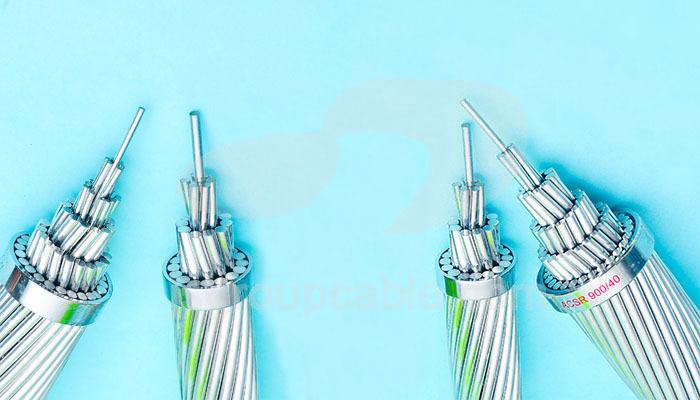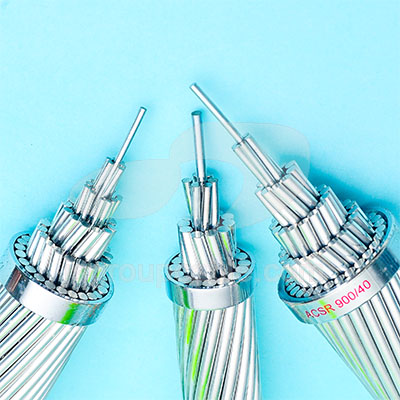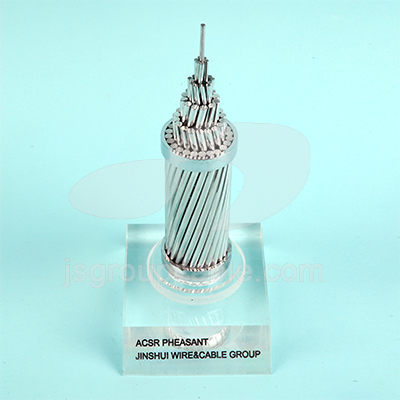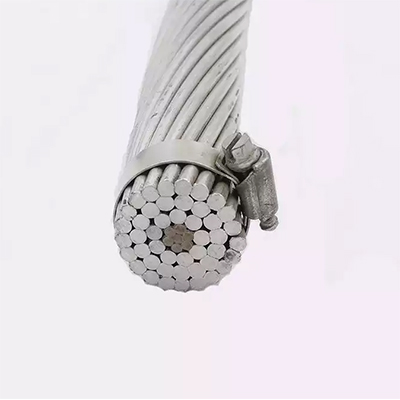- Offices Time:24 Hours Online
- Email:[email protected]
- WhatsApp:+8618339938759

Posted on February 27, 2023
Specifications And Applications Of ACSR Conductor
ACSR conductors are used in overhead transmission and distribution lines to transmit electricity. Its purpose is to provide the high tensile strength, durability and electrical conductivity required for long-distance power transmission.
The ACSR conductor consists of a central steel core surrounded by one or more layers of aluminum wires. The steel core provides high tensile strength to the conductor, which allows it to resist the mechanical stresses and the weight of the wire itself, as well as any external forces caused by wind, ice, or other environmental factors. The aluminum outer layers provide high conductivity for electrical power transmission, while also reducing the overall weight of the conductor.
ACSR conductor are particularly useful in areas where transmission lines need to be run over long distances, such as in rural or remote areas. In use, it allows large amounts of power to be transmitted over a relatively small cross-sectional area, which helps reduce the cost and complexity of transmission line infrastructure. Additionally, it also provides high resistance to thermal expansion and contraction, helping to prevent damage to conductors caused by temperature fluctuations.

ACSR (Aluminum Conductor Steel Reinforced) conductor are widely used in the electric power industry for overhead transmission and distribution lines. The following are the specifications for ACSR conductor:
1.Conductor Material
Consist of aluminum wires stranded around a central steel core.
2.Stranding
The aluminum wires are typically stranded in concentric layers around the steel core. The stranding can be uniform or non-uniform, depending on the specific ACSR design.
3.Size
ACSR conductor come in a variety of sizes, usually indicated by a code name. The code name typically includes information about the number and size of the aluminum wires and the size of the steel core.
4.Electrical Properties
Its electrical performance depends on the specific design and size. The most important electrical properties are the resistance, capacitance, and inductance.

5.Mechanical Properties
Requirements must be able to withstand the mechanical stress associated with overhead transmission and distribution lines. The most important mechanical properties are the tensile strength, modulus of elasticity, and coefficient of thermal expansion.
6.Corrosion Resistance
Must have good corrosion resistance to ensure long-term reliability. This can be achieved through the use of corrosion-resistant coatings or by selecting materials with good inherent corrosion resistance.
7.Temperature Rating
It is typically rated for a maximum operating temperature, which is determined by the conductor material and the design. This temperature rating is important for ensuring that the conductor does not overheat and fail during operation.
8.Standards
ACSR conductor are typically designed and manufactured according to national and international standards, such as ASTM, IEC, or BS. These standards specify the requirements for materials, manufacturing, and testing to ensure that the conductors meet the necessary performance and safety requirements.

Application scope of ACSR conductor
ACSR (Aluminum Conductor Steel Reinforced) conductor are widely used in the electrical power industry due to their high strength, excellent conductivity, and durability.
1.Transmission lines
It is commonly used in high-voltage transmission lines, where their high strength and ability to handle high electrical loads make them ideal for carrying large amounts of electricity over long distances.
2.Distribution lines
ACSR are also used in distribution lines, which carry electricity from substations to homes, businesses, and other buildings. it is particularly useful in areas where the lines need to be run over long distances or through rugged terrain.
3.Overhead power lines
ACSR are commonly used in overhead power lines, which are the most common way of transmitting electricity. Overhead power lines can be found in both rural and urban areas and are used to carry electricity from power plants to substations.
4.High-temperature applications
It can also be used in high-temperature applications, such as in industrial settings where high temperatures are present. The steel core of ACSR conductor provides strength and durability, while the aluminum outer layer provides excellent conductivity.
5.Mountainous terrain
ACSR conductor are also used in mountainous terrain, where the steel core provides extra strength to withstand the weight of the conductor over long spans.
6.River crossings
Also can be used for river crossings, where their strength and ability to withstand tension and compression make them ideal for use in suspension bridges or other types of river crossings.

7.High wind areas
Be used in areas that experience high winds, such as on high-rise buildings or in areas prone to hurricanes or tornadoes. The steel core provides extra strength to withstand the force of the wind, while the aluminum outer layer provides excellent conductivity.
8.Railway electrification
Also used for railway electrification systems, where they are used to provide power to electric trains. The strength and durability of ACSR conductor make them ideal for this application, where they must be able to withstand the constant movement and vibration of the train.
9.Coastal areas
ACSR conductor are often used in coastal areas, where the salty air can corrode other types of conductors. The steel core of ACSR conductor is resistant to corrosion, making them ideal for use in these environments.
The application scope of ACSR conductor is vast, and they are used in a variety of applications across the electrical power industry. Their high strength, excellent conductivity, and durability make them ideal for use in transmission and distribution lines, high-temperature applications, coastal areas, mountainous terrain, river crossings, high wind areas, and railway electrification systems.
How to choose a steel core aluminum stranded wire conductor?
ACSR is a widely used overhead power line conductor. The selection of ACSR conductors is based on a variety of factors, including electrical characteristics, mechanical properties, environmental factors, cost, and regulatory requirements. Select the conductor suitable for the application and select the appropriate manufacturer.
Post categories
Most Popular Posts
-
The 136th Canton Fair welcomes you to participate!
October 12, 2024 -
High temperature cable introduction
July 26, 2024 -
Kenya Power and Energy Exhibition 2024
June 11, 2024 -
Introduction of rubber sheathed cable
June 5, 2024





